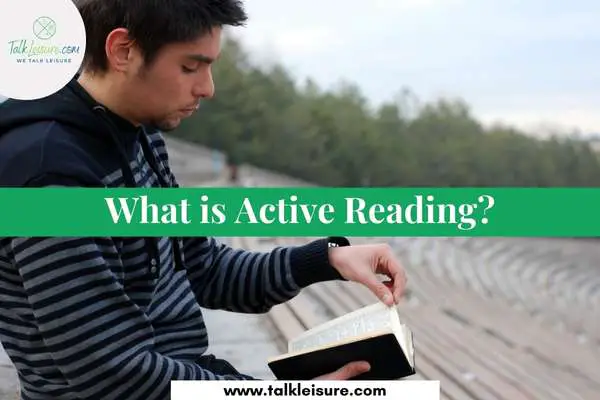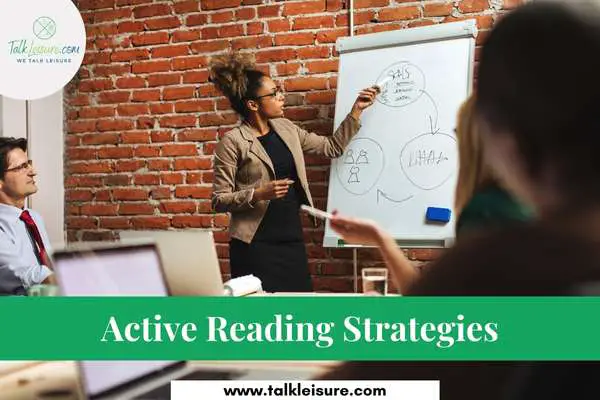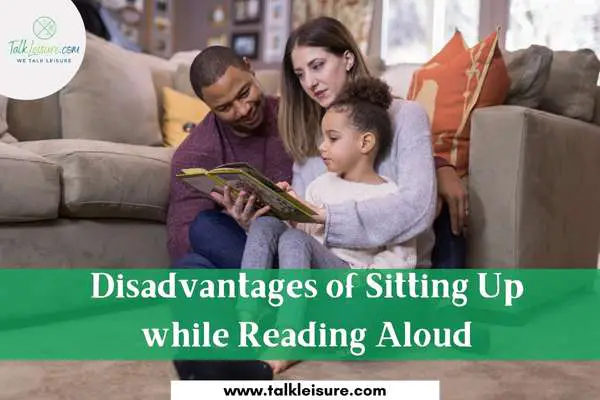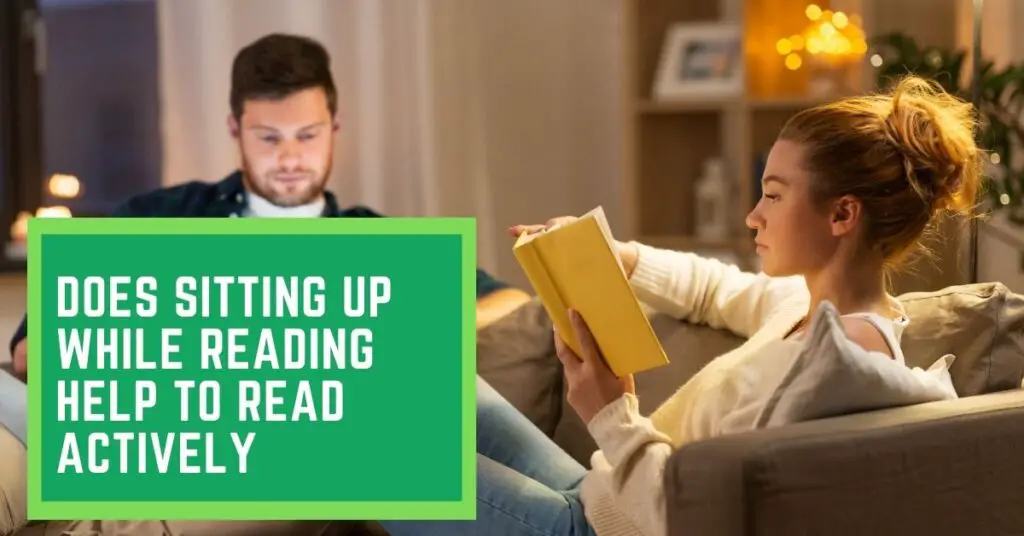When we think about reading, we usually envision someone sitting in a comfortable chair with a book in their hands.
But did you know that there are different ways to read? Some people prefer to lie down when they read, while others find it more helpful to sit up. So, does sitting up while reading helps you to read actively?
The answer is yes! Sitting up helps you to focus and pay attention to the words on the page. It also allows you to move around more easily if you need to take breaks or get up and walk around.
Sitting up also gives you a better view of the words on the page. When you’re lying down, it’s easy for your eyes to wander and lose focus. Sitting up helps you keep your eyes on the prize!
Lying down can be relaxing, but it’s not always the best position for reading. Sitting up is definitely the better option if you tend to fall asleep when you lie down.
So next time you settle down with a good book, make sure you’re sitting up tall and ready to read actively. Your mind will thank you for it!
What is Active Reading?

Active reading is a term used to describe a reading technique employed to understand better the text being read. This technique involves engaging with the text on a deeper level, beyond simply decoding the words on the page.
In order to actively read, learners must be willing to critically engage with the material, asking questions, making connections, and seeking clarification where needed.
While active reading requires more effort than passive reading, it is also far more effective in helping learners comprehend and retain information.
Active readers are able to construct meaning from the text by making connections between what they are reading and their prior knowledge. This allows them to build a deeper understanding of the material, which can then be applied to other areas of their lives.
Active reading is an important skill for all learners, as it allows them to gain a deeper understanding of the text they are reading. By using active reading strategies, learners can improve their comprehension, retention, and overall enjoyment of the material.
Active Reading Strategies

There are a number of different strategies that can be used in order to read a text actively. These include:
– Previewing the material: Answer: Previewing the material helps you to active reading. This is because if you understand what you are going to read, you can be more alert and attentive when you do read it.
There are a few things that you can do to preview the material. First, skim through the chapter or article to get a general overview of what it covers. Next, look at the headings and subheadings and try to identify the main points that will be covered.
Finally, read the introduction and conclusion to get a sense of the author’s main points. By doing this, you will be better prepared to read and understand the material when you dive in.
– Asking questions: Asking questions while you are reading helps to keep you active and engaged with the material. When you ask yourself questions while you are reading, it forces your brain to think about what you are reading and try to answer the question.
This process of asking and answering questions helps improve comprehension and understanding. Additionally, when you active read in this way, it allows you to take control of your learning by focusing on information that is most relevant or important to you.
– Making Predictions: It’s true that making predictions while you’re reading can help you to be an active reader. When you make predictions, you’re essentially making a guess about what’s going to happen next in the text. And when you make guesses, you’re engaging your brain and getting ready to learn.
So by making predictions, you’re actually setting yourself up for success. You’re preparing yourself to understand better and remember what you read. And the more engaged your brain is while you’re reading, the more likely it is that you’ll understand and remember what you’ve read.
– Visualizing: It’s no secret that reading can be a big mental challenge. However, did you know that by simply visualizing while you read, you can help to increase your level of focus and understanding.
In short, visualization means creating mental images of what you’re reading in your mind. So, for instance, if you’re reading about a character in a novel, you might try to picture what they look like in your head.
If you’re not sure how to start visualizing while you read, don’t worry – it’s actually pretty easy. The next time you settle down with a good book, make an effort to create images in your mind as you read along.
For example, when introduced to a new setting or character, try to picture what they look like in your head. As you read, pay attention to the details and use them to build a clear mental image.
With a little practice, you’ll get better and better at visualization. And as your visualization skills improve, so will your focus and understanding while reading.
– Connecting: When you make a connection between the new information and something you already know, it anchors the new information in your memory. This is why active reading is so important – it gives you the opportunity to make connections and anchor the new information in your memory.

Suppose you can connect what you’re reading to your own life experience. For example, if you’re reading about a character in a novel, try to imagine what it would be like to be that character.
Or, if you’re reading about a historical event, try to picture yourself being there at the time it happened. The more connections you can make between what you’re reading and your own life experience, the easier it will be to remember and understand what you’ve read.
– Summarizing: Summarizing helps you to active reading. By creating a summary of what you read, you are able to solidify the main points in your mind and better engage with the material.
This is because when you summarize, you are essentially rewriting the main ideas in your own words, which forces you to slow down and critically think about what you are reading.
Additionally, by generating a summary, you can identify any gaps in your understanding and go back to re-read key sections as necessary.
Lastly, summarizing also allows you to reflect on what you have read and consolidate newly learned information. Thus, summarising improves your reading comprehension, but it also aids in long-term retention of the material.
Disadvantages of Sitting Up while Reading Aloud

– Less Energetic Delivery: Many experts agree that the best way to deliver a speech is to stand up straight, make eye contact with your audience, and project your voice. This will help you appear confident and in control, which is an important factor when trying to persuade your listeners.
– Less Audible to Audience: Sitting up might not be the best position for reading aloud – it can be a bit tougher to project your voice when you’re sitting up straight.
You might want to try leaning slightly forward while you read, which will help you to sound more powerful and resonant. Alternatively, you could try standing up while you read, which will make your voice even more audible to your audience.
– Unclear Pronunciation: If you’re sitting up and reading, your posture may be affecting your pronunciation. Make sure you’re sitting upright with good posture or standing straight, and try reading aloud again. You should also check the position of your tongue – make sure it’s not blocking any airways. If all else fails, try recording yourself reading aloud so you can identify any problem areas.
– Difficult to Raise & Lower the Voice: It can be difficult to raise and lower your voice when sitting up. This is because when you’re sitting up, your vocal cords are in a more closed position than when you’re lying down. This can make it harder to produce higher and lower pitches.
However, you can learn to adjust your pitch while sitting up with practice. Try exaggerating the motions of raising and lowering your voice while sitting up, and pay attention to how it changes the sound of your voice. You may also want to try practising some vocal exercises while sitting up.
Visual Explanations
i. 5 General Active Reading Tips:
Related Matters
01. Any advantages of sitting up reading?
Sitting up to read has a few advantages over lying down. For one, it can help reduce neck and back pain that can come from lying in an uncomfortable position for too long.
Additionally, sitting up allows you to take advantage of gravity, which can help keep pages turned and books from slipping off your lap. Finally, sitting up provides better support for your arms and hands, which can help reduce fatigue while reading.
02. What is the SQ3R active reading method?
SQ3R is a reading comprehension strategy that helps students read texts more effectively and remember what they have read. The acronym stands for Survey, Question, Read, Recite, and Review.
To use the SQ3R strategy, students should first survey the text to understand its main points. They should then ask questions about the text to clarify its meaning further.
Next, they should read the text thoroughly to answer the questions they posed earlier. After reading, students should recite back what they have learned in their own words. Finally, they should review the material to solidify their understanding.
03. What is the SQ4R active reading method?
The SQ4RActive Reading method is a note-taking approach that can be used when reading textbooks or other lengthy materials. It stands for Survey, Question, Read, Recite, and Review.
The first step, Survey, has students quickly flipping through the chapter or section to get a general overview. This gives them a chance to identify keywords and ideas before they start reading in-depth.
Next, students Question the text by coming up with questions they want to answer. This helps them focus on what they are looking for as they read.
Then they Read actively, seeking out answers to their questions and looking for supporting evidence. Students should underline or highlight important information as they go.
After finishing the reading, students Recite what they have read by summarizing it in their own words or creating a mind map. This step helps them process and remember the information they just read.
Finally, they Review their notes and highlight key points. This last step helps ensure that they completely understand the material.
04. What causes readers to read actively?
There are a number of things that can cause readers to read actively. Some people might be motivated to read actively in order to learn new information, while others might be more interested in reading for entertainment or leisure.
Additionally, some people might be more engaged in a text when they feel like they have some control over their reading experience, while others might prefer to let the author lead them through the story.
Some other factors that can affect reader engagement include the layout or design of the text, the font or typeface used, and the tone of voice of the writing. Ultimately, it’s up to each individual reader to decide what makes them most active and engaged when reading.
05. What is the best way to read actively?
The best way to read actively is to take notes while you’re reading. This will help you focus on the most important points and connect the ideas in the text.
It can also be helpful to summarize what you’ve just read in your own words. This will help you to understand and remember the information better. Finally, be sure to ask yourself questions about what you’ve read and think about how it applies to your life. You’ll get the most out of your reading experience by doing all of these things!





